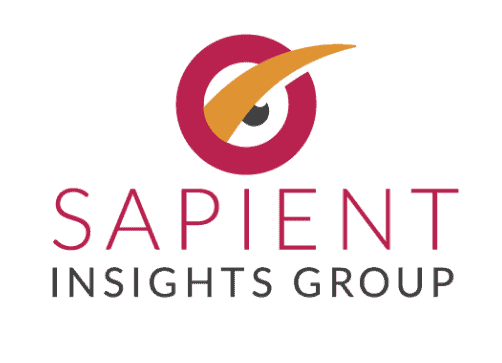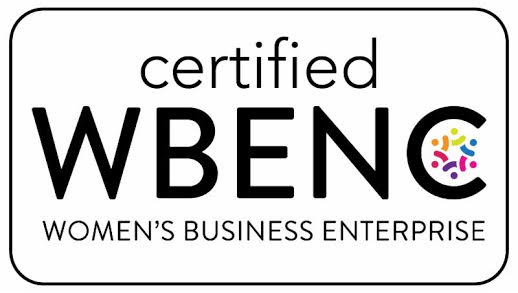At some point, every organization has the same realization: the HR technology strategy that once fit so well – carefully mapped, vendor-selected, and road mapped to the nth degree – no longer matches the way the business actually works. It isn’t necessarily because the technology aged out. It’s because the decisions that shaped the strategy were made for a different reality, and the organization failed to adapt when that reality changed.
In theory, HR tech strategies are built to guide transformation.
In practice, they’re often the first things to go stale.
New leaders arrive, organizational structures evolve, workforce models shift, and what was once a carefully coordinated system becomes a patchwork of outdated tools, redundant processes, and growing frustration on all sides.
Yet instead of confronting the underlying misalignment, many organizations fall back on minor upgrades, one-off point solutions, or even worse, manual work-arounds.
The strategy remains unchanged, and the underlying cause is “decision debt.”
Borrowed from software development, “decision debt” refers to the compounding cost of deferred or avoided decisions. In the context of HR tech, it’s what accumulates when organizations stick with vendor stacks that no longer serve them, keep workflows that reflect a 2018 org chart, or delay governance realignment because it’s politically inconvenient.
In today’s volatile business environment, where transformation is no longer episodic but constant, the interest on that debt adds up quickly.
According to our 2024–2025 Annual HR Systems Survey Report, only 43% of organizations report having a defined HR technology function. Among those that do, 58% of leaders in those roles have held them for fewer than three years.
That’s not just a signal of talent churn. It’s a warning sign that long-range tech stewardship is missing in action. When strategy leadership turns over quickly – or worse, is never formally established – the burden of evolving with the business is left to overextended HR teams and well-meaning IT partners operating from old blueprints.
Meanwhile, the systems themselves are showing signs of strain. Our research reveals that user experience and vendor satisfaction scores have declined year-over-year across multiple core technologies, including HRMS, payroll, and benefits platforms. Frustration is rising on both sides of the user interface – employees struggling with clunky tools, and leaders wondering why adoption rates are falling. It’s easy to blame vendors or internal rollout missteps, but the truth is often simpler and more uncomfortable: the system is still doing what it was designed to do… it’s just no longer designed for today.
The implications stretch far beyond HR.
From a CFO’s perspective, decision debt shows up as redundant licenses, support contracts for underused tools, and missed opportunities to streamline people operations.
For strategy leaders, it manifests as operational friction: when talent data can’t inform forecasting models, when performance insights lag behind business needs, when workforce planning becomes a spreadsheet exercise instead of a strategic function.
For HR itself, the cost is steep: each workaround, workaround-on-a-workaround, or Excel export is time spent managing systems instead of driving outcomes. And in a data-driven world, incomplete or erroneous data will yield incomplete and erroneous results at scale.
The irony is that most organizations don’t set out to build fragile strategies, of course. In fact, many invest heavily up front – months of stakeholder meetings, vendor demos, implementation plans. But then, after go-live, the strategy quietly ossifies. New workflows are bolted on. Integration points are patched instead of rethought. And the critical question – “Is this still the right approach for how we work today?” – goes unasked. Or worse, it’s asked quietly in backchannels, with no formal path for review or correction.
This is where the notion of “strategy as product” becomes useful. Just as software evolves through continuous iteration, feedback loops, and user testing, HR tech strategy should be treated as a living asset… one that adapts as the business does. That means putting structures in place not just for system maintenance, but for strategic review: quarterly checkpoints, feedback collection, cross-functional governance. Yes, I said governance.
Strategy should have a backlog, a roadmap, a steward. Not just a launch date.
Instead, HR leaders are often left trying to evolve technology strategy in a vacuum – without executive alignment, change enablement, or visibility into broader business shifts. This is where CFOs and CSOs must become true partners.
From a financial perspective, stagnant HR systems create hidden cost centers. From a strategic lens, they distort how the organization sees its people and their potential. When transformation fails to take root, it’s not always due to a lack of vision. It’s because the support systems that enable execution were never updated to reflect that vision.
In a world where AI is rapidly reshaping what work looks like, those support systems matter more than ever. One of the key findings in this year’s report is the dramatic growth in AI implementation across HR functions, particularly among enterprise organizations. Yet even as the tools get smarter, the gaps between capability and usability are widening. Because AI doesn’t fix governance. It doesn’t resolve broken workflows. And it certainly doesn’t align misfit systems to evolving business strategy.
That alignment gap is growing more costly by the quarter.
HR technology spend is holding steady or increasing in 41% of organizations, and yet only a fraction are seeing corresponding gains in talent, HR, or business outcomes. In fact, our data shows that outcomes in all three areas have declined year over year. That’s not an anomaly—it’s a lagging indicator of decision debt reaching its threshold. More systems, more spend, less impact.
So, how do you get ahead of the curve?
It starts by making peace with the idea that every strategy has a shelf life.
The point isn’t to avoid obsolescence, it’s to recognize it early and respond decisively. The best organizations don’t chase perfection; they design for adaptability. They choose platforms that are composable, not monolithic. They create governance models that anticipate change. They empower HR, IT, and business leaders to ask hard questions regularly, not just after an implementation fails.
This also means acknowledging that change management is not a one-time effort. In our 2024 findings from the Annual HR Systems Survey Report, only 27% of organizations reported using formal change management approaches during HR technology transitions. That’s both a missed opportunity and a root cause of strategy decay.
Because when change isn’t managed, adoption drops.
When adoption drops, workarounds multiply.
And when workarounds become the norm, data integrity erodes, reporting loses credibility, and strategic insight fades into noise.
Leaders must reframe change management as infrastructure, an always-on discipline that guides not just system rollouts, but the ongoing evolution of how those systems are used, adapted, and aligned with shifting priorities. It’s not just about onboarding users. It’s about sustaining strategic clarity.
At a more fundamental level, addressing decision debt means empowering HR to move from reactive problem-solving to proactive design. That starts with visibility: do HR leaders know what the business is planning? Are they part of those conversations early enough to shape tech strategy in support of them? Are the right metrics in place to evaluate not just system performance, but strategic contribution?
Ultimately, the challenge isn’t that organizations outgrow their strategies. It’s that too few have a mechanism to recognize when it’s happening (or the will to act when it does.) That’s why decision debt is so dangerous: it doesn’t present as a crisis. It presents as a series of tolerable annoyances. But those annoyances build up. They frustrate users, drain budgets, and weaken the foundation beneath transformation efforts.
The solution isn’t necessarily bold. It’s just disciplined.
- Treat your HR tech strategy like a living system.
- Name an owner.
- Build in regular feedback cycles.
- Create a path to revisit assumptions, not just react to breakdowns.
- And most importantly, create the space (and the executive support) to actually evolve.
At Sapient Insights Group, we’ve spent more than two decades helping organizations understand where their systems are helping, and where they’re holding them back.
Our 2024–2025 HR Systems Survey offers the clearest view yet into the intersection of strategy, technology, and organizational performance. If your HR tech plan hasn’t been reviewed in more than a year, now is the time. Because strategy doesn’t fail in one moment. It erodes decision by decision – until the only path left is starting over from scratch.
Avoid that cliff!
If you want to start doing something today, I recommend you participate now in this year’s research report. This is a complex survey that is not just checking boxes to provide us information. It’s about YOU thinking about your current HR tech stack, what you have in place, what you need, and what’s not up to the job. It forces you to think more strategically about what you have and can be a real eye-opener. It can also serve as a starting point for your overall HR technology strategy if you don’t have something to work with. You’ll get a copy of the full report when it comes out and a mini-benchmark of you against the market. And we get data to help build a thriving industry of HR technology. It’s a win-win!
Alternatively, book a chat with me to talk about what’s happening in your organization and we’ll help you figure out where to start whether it’s from an old tech strategy someone built before you or just one that needs a refresh.
We’re here to help you build a strategy that evolves as fast as your business.


